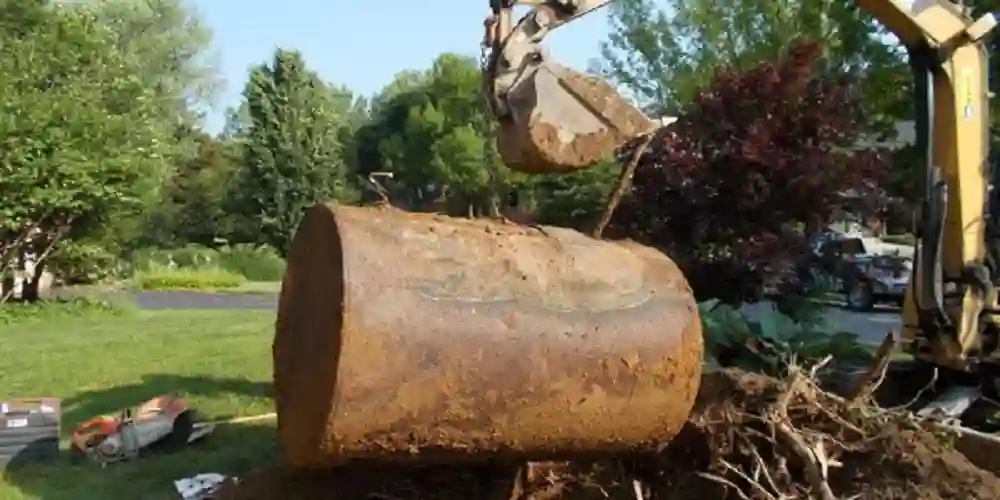As homes evolve, so do their heating systems, rendering old oil tanks obsolete. Oil tank decommissioning is a crucial process that ensures the safe removal or retirement of these aging structures. This comprehensive guide serves as your compass through the intricacies of oil tank decommissioning, providing homeowners with the knowledge needed to bid farewell to the old and welcome the new.
1.Understanding Oil Tank Decommissioning:
Oil tank decommissioning involves the proper retirement of an existing oil tank. Whether you’re transitioning to a different heating source or eliminating an outdated tank to prevent environmental risks, decommissioning ensures a safe and responsible process.
2.Legal Compliance and Regulations:
Before embarking on oil tank decommissioning, it’s essential to understand and comply with local and state regulations. Many jurisdictions have specific guidelines for tank decommissioning, including permitting requirements and safety standards. Familiarizing yourself with these regulations helps avoid legal complications and ensures a smooth decommissioning process.
3.Determining the Need for Decommissioning:
Several factors may prompt the need for oil tank decommissioning. Aging tanks, changes in heating systems, or the discovery of structural issues during inspections are common reasons. Regular assessments by professionals can help determine when decommissioning is necessary, preventing potential hazards associated with deteriorating tanks.
4.Choosing Between Removal and Abandonment:
When considering oil tank decommissioning, homeowners must decide between complete removal and abandonment in place. Complete removal involves extracting the tank from the ground, while abandonment leaves the tank in place after proper cleaning and filling. The decision depends on factors such as space constraints, budget considerations, and environmental impact.
5.Site Assessment:
Before commencing with oil tank decommissioning, a thorough site assessment is conducted. This involves locating the tank, assessing its condition, and determining potential environmental risks. Soil and groundwater testing may be necessary to identify any contamination that requires remediation.
6.Safe Tank Cleaning and Pumping:
The initial steps of oil tank decommissioning involve cleaning and pumping out any remaining oil from the tank. This process ensures that no residual oil poses a risk during subsequent phases. Proper disposal of the extracted oil is essential to prevent environmental contamination.
7.Excavation for Removal:
In cases where complete removal is chosen, excavation becomes a critical phase. The area surrounding the tank is excavated to expose it fully, allowing for a careful inspection. Specialized equipment is then employed to lift the tank from its underground location. Precision is key to avoid damage to the tank or surrounding structures.
8.Abandonment in Place:
For homeowners opting for abandonment, the tank is cleaned thoroughly, and any remaining voids are filled with an inert material, such as sand or foam. Proper abandonment procedures ensure that the tank is sealed effectively to prevent future issues.
9.Environmental Remediation:
If soil or groundwater contamination is detected during the decommissioning process, environmental remediation measures are implemented. Remediation may involve removing and replacing contaminated soil or applying advanced treatments for groundwater. Thorough documentation of these efforts is essential for regulatory compliance.
10.Documentation and Reporting:
The final step in oil tank decommissioning involves comprehensive documentation and reporting. Homeowners receive a detailed report outlining the entire decommissioning process, including environmental assessments and any remediation activities. This documentation is crucial for proving compliance with regulations and serves as a record of responsible environmental stewardship.
Conclusion:
Out with the old and in with the new – oil tank decommissioning is a vital step in the evolution of home heating systems. By understanding the process, complying with regulations, and making informed decisions about removal or abandonment, homeowners can ensure a smooth transition while prioritizing safety and environmental responsibility. A comprehensive approach, including site assessment, safe tank cleaning, excavation (if required), and proper documentation, guarantees a successful oil tank decommissioning process, leaving homeowners with peace of mind and a clean slate for their home heating needs.



